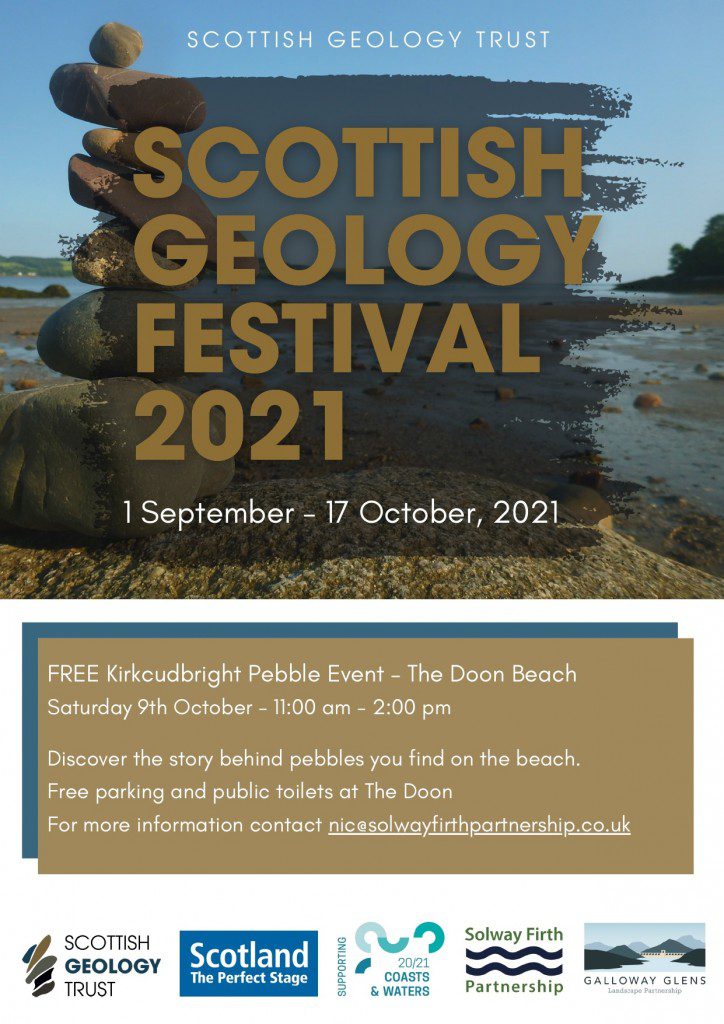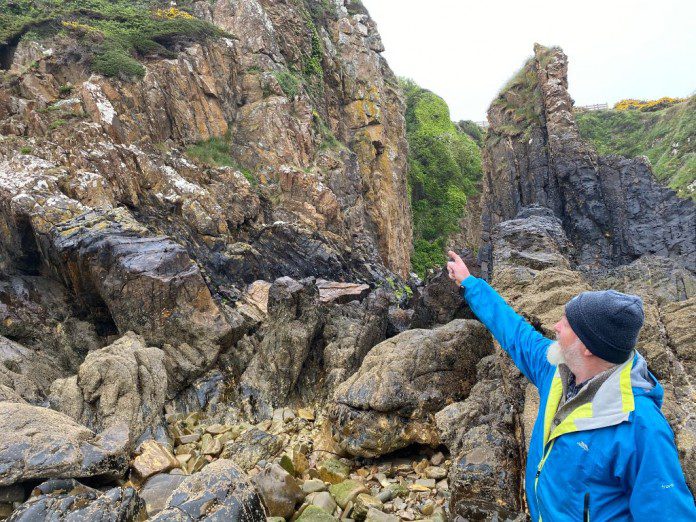When was the last time you looked at the rocks under your feet?
The geology of Galloway plays such an important part in our landscape, and on the 9th of October, experts from the Scottish Geology Trust and local charity, Solway Firth Partnership, will be holding a free event -suitable for the whole family – to discover the story behind the pebbles you find on the beach.
At first glance, the shingle beaches of Dumfries and Galloway seem very grey but take a closer look and you will find an amazing variety of pebbles at your feet; from red jasper to black basalts, milky white quartz to speckled granites. Every pebble has a story to tell that explains how they were created, and the journey undertaken before they arrived on our shores.
As part of the Scottish Geology Festival, visit The Doon beach, Kirkcudbright between 11:00am and 2:00pm on Saturday 9th October where experts will be available to tell you about rocks and pebbles. The event is being delivered by Solway Firth Partnership and the Scottish Geology Trust, with the support of the Galloway Glens Scheme.
Often pebbles have been moved by water as they are tumbled smooth by the action of waves or rivers. The greatest mover of stones in the Solway was the power of ice that over the last million years reshaped the landscape and created the one we recognise today. Ice sheets hundreds of metres deep fed the glaciers that flowed under their own enormous weight. Glaciers scoured off layers of rock and moved boulders great distances but when the ice melted, they were dumped far from their place of origin.
A large boulder that has been moved by ice is known as an ‘erratic’ but many pebbles on the shore have moved a similar distance.
Nic Coombey, from Solway Firth Partnership said
“While most pebbles in Kirkcudbright Bay have been moved by natural forces sometimes there is a surprising explanation for the appearance of strange stones. From flints and granite from Northern Ireland to nickel ore from a South Pacific Island. Come along to the free drop in event and find out more about pebbles!”.
More details on the drop-in event, and the wider Scottish Geology Festival running through September and October, are available here: https://www.scottishgeologytrust.org/festival/






